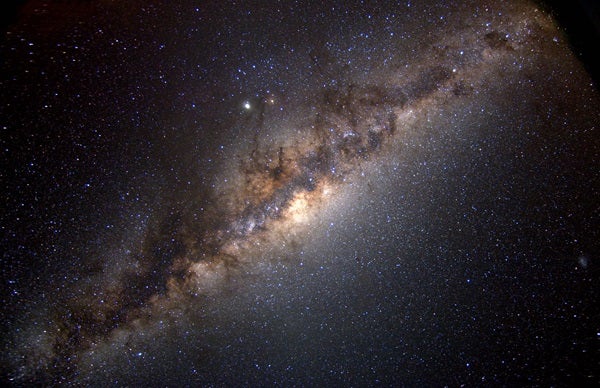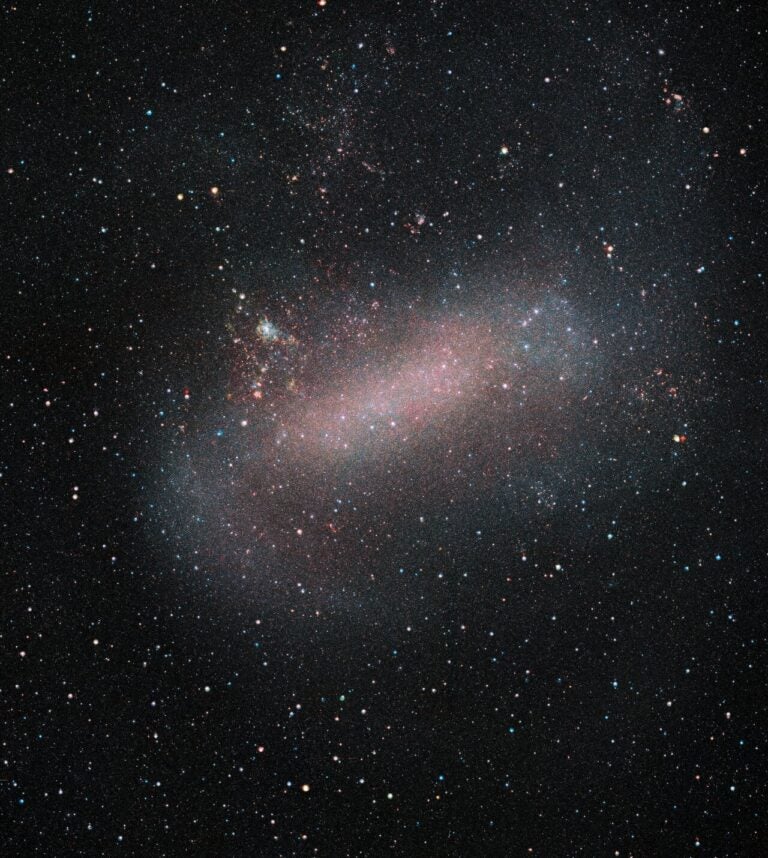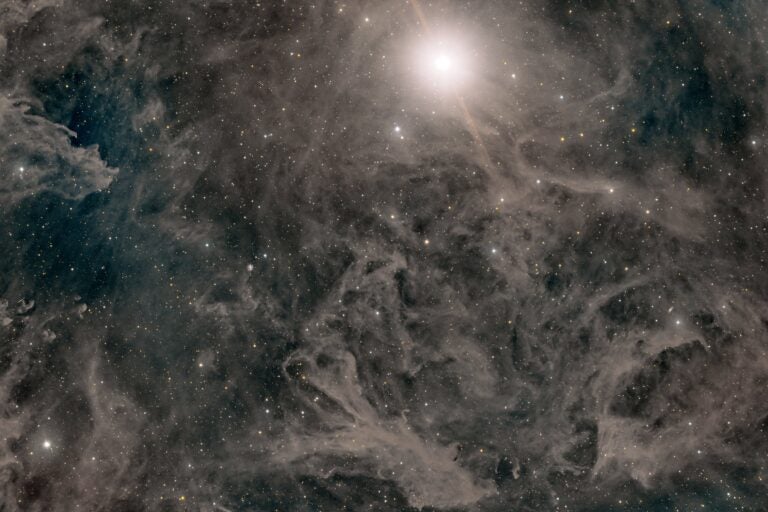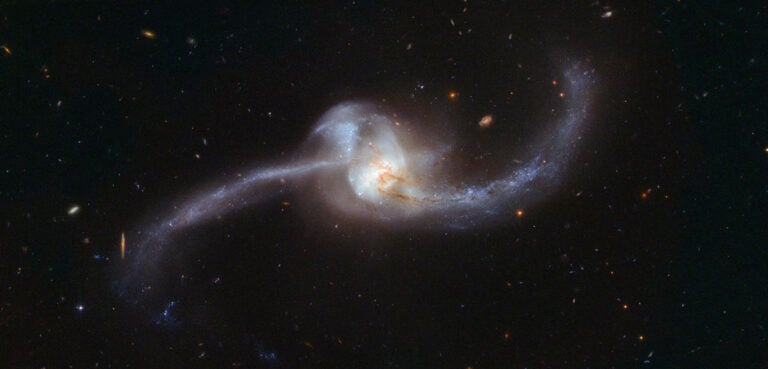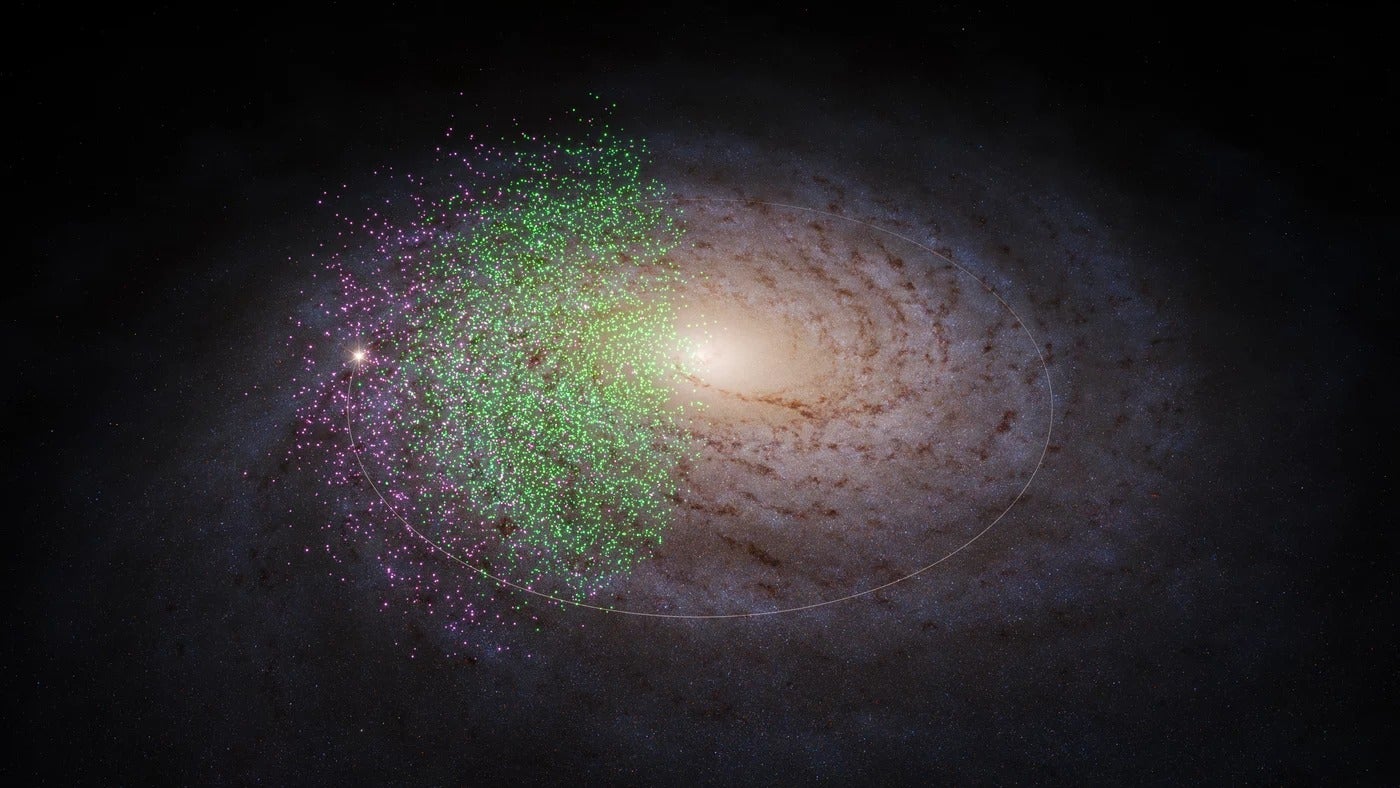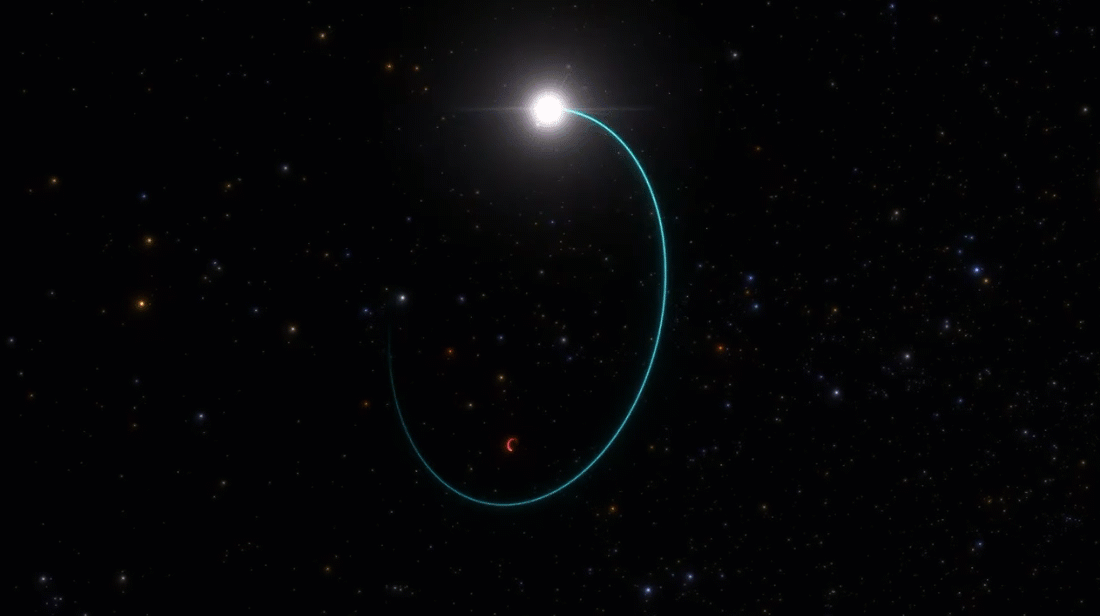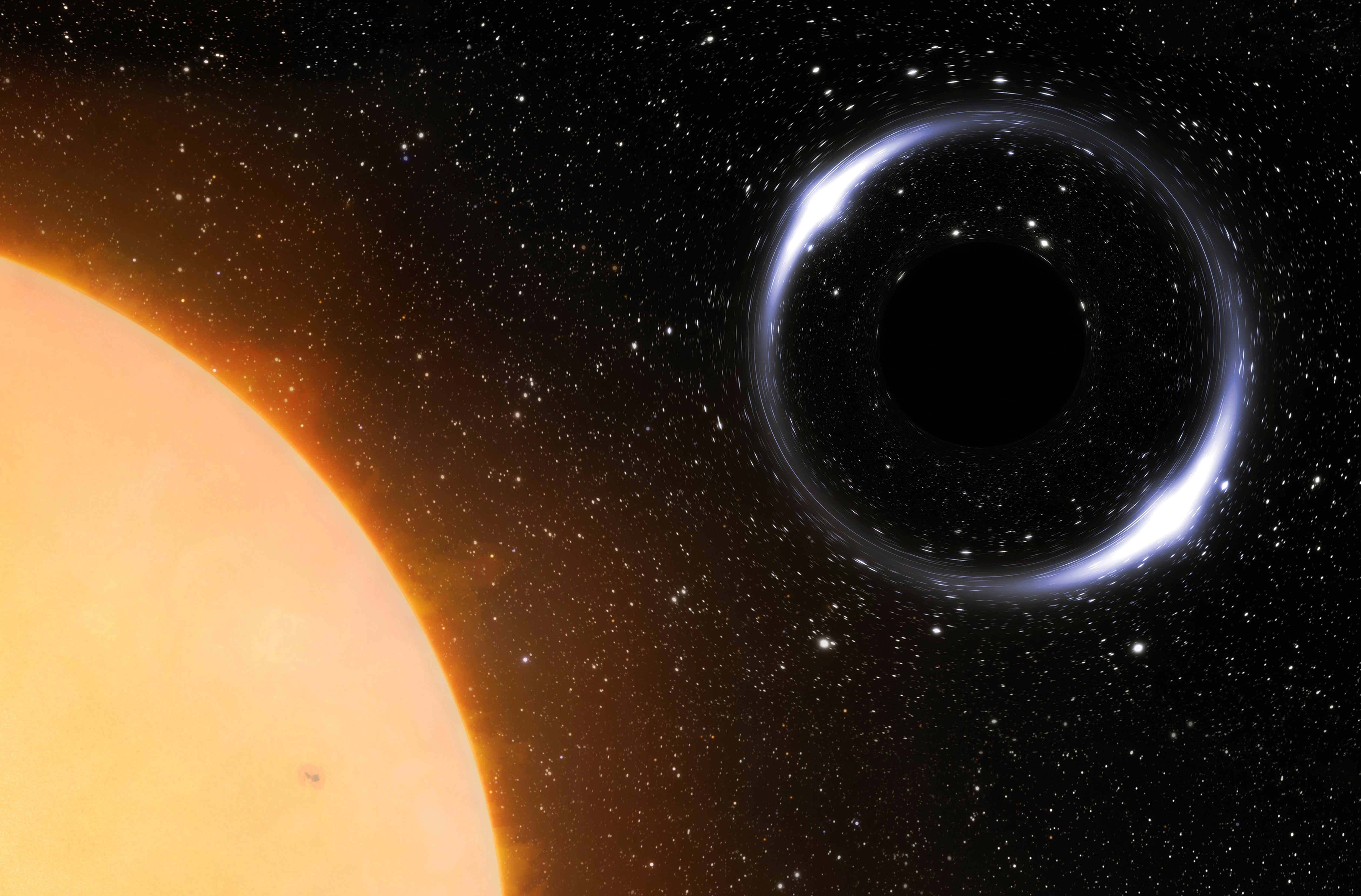So, let’s assume a few things: First, let’s consider a camera like JunoCam on the Juno orbiter currently circling Jupiter. JunoCam has a pretty large field of view for a spacecraft camera: 58° across. (For comparison, a 35mm lens on a DSLR has a field of view of 63°.) So, to capture the Milky Way in one shot, JunoCam would have to be at a distance such that the entire disk of our galaxy takes up 58° (or less). Second, let’s assume the visible disk of the Milky Way, which is a spiral galaxy, is 100,000 light-years in diameter; this is a pretty good estimate, though it’s continually being refined based on new, more accurate measurements. Third, while we know that the solar system is nowhere near the center of our galaxy, and is instead about 26,000 light-years from the center, let’s assume we’re sending JunoCam straight up from the center of the galaxy, for simplicity.
Calculating an object’s angular size — how large it appears on the sky — is pretty straightforward for small angles, but gets a little more complicated as you approach larger ones (up to sizes of 180°). Still, it’s possible, and regardless of the formula, the angular size (here, we’re assuming 58° to fit in JunoCam’s field of view) depends on the object’s physical size (in this case, 100,000 light-years) and the distance to the object (what we want to know). It turns out that a spacecraft carrying JunoCam would have to be launched to a position about 90,000 light-years above the plane of the Milky Way to be able to look back down and just barely fit the entire disk of the galaxy in its field of view.
Alison Klesman
Associate Editor

